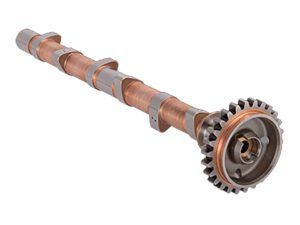Military Training vs. GA
Good article by Matt Johnson in the April 2024 issue, “Military vs. GA.” The picture of the A-4 Navy Skyhawk is from my old squadron, VA-172 Bluebolts. I also became a civilian CFI after five years of active duty and three of reserve flying, and 30 years without flying.
In 2001, I took a flight review in a Cessna 150, my first time piloting a civilian aircraft. Three hours of dual and I was signed off. I believe the carrier landing experience ingrained on-speed landings firmly in my mind. The military experience also made me a better CFI.
—Paul Meinhardt, Via email
Thanks for the kind words, and welcome back to the cockpit!
Manufacturing Defects
 The February 2024 issue of Aviation Safety had mechanics’ reports of worn camshaft lobes after very short service times, and some cams were replaced twice with same problem. The engine/plane owner gets screwed having to pay for defective parts and labor, which should be the responsibility of the engine manufacturer. Lycoming and Continental have technical staffs to design and control production parts to assure high levels of reliability and these folks drop the ball…again and again.
The February 2024 issue of Aviation Safety had mechanics’ reports of worn camshaft lobes after very short service times, and some cams were replaced twice with same problem. The engine/plane owner gets screwed having to pay for defective parts and labor, which should be the responsibility of the engine manufacturer. Lycoming and Continental have technical staffs to design and control production parts to assure high levels of reliability and these folks drop the ball…again and again.
If auto manufacturers had the same problem, there would be a recall for the bad parts covered by the car companies, but because it’s an aircraft engine, the owner gets to pay for the mistakes of the company.
And you wonder why fewer people become pilots and plane owners.
—Bob Hartunian, Fawnskin, Calif.
As aircraft owners and the financially responsible parties when things go wrong and need fixing, we couldn’t agree more. Engine cylinders are another case in point, one on which we’ve suffered through several ADs and other calamities. Of course, the economies of scale don’t exist for personal aviation like they do for other products, like cars or electronics.
On the flip side are manufacturer and maintenance facility warranties, with which we’ve had good luck over the last few years. For example, more than 25 years on, Garmin is only now winding down support for the GNS 430, with the 530 to follow.
There are, of course, manufacturers and shops we won’t use any longer, based on not standing behind their work or actually returning the airplane to us in worse shape than before.
We don’t know what the answer is, but can only point out that no one ever said flying personal airplanes is cheap or economical.
Doing Things Quickly?
In April’s Accident Probe, “Haste Makes Waste,” Jeb asserts that “pilots should never do anything in a cockpit quickly.” Backed up with some cherry-picked portions of the FAA’s Pilot’s Handbook of Aeronautical Knowledge, he seems to be advocating sitting on one’s hands when an engine fails or traffic poses a collision threat. What’s his real position?
—Keith Strauss, Via email
You’ve got it mostly right, and we’d point out that reviewing the entire discussion in that month’s Accident Probe would add some context.
For example, Jeb’s statement came with some caveats, including this: “[T]he steps we take in response to a failed engine often can’t be performed immediately— we still have to fly the airplane. Our training requires us to have already considered such an event and practiced the steps to take. That doesn’t mean, however, that we should rush through them. A methodical process, backed up with a checklist, always is preferable and, to us, is the sign of good airmanship.”
In the accident discussed, it appears the pilot crammed on full power for the go-around without contemplating the airplane’s natural reaction—yaw—and lost control. In our view, it would be more appropriate to incrementally add power, arrest the descent, fly the airplane, then add full power, along with appropriate right rudder.
Send your thoughts, comments or questions to [email protected]



